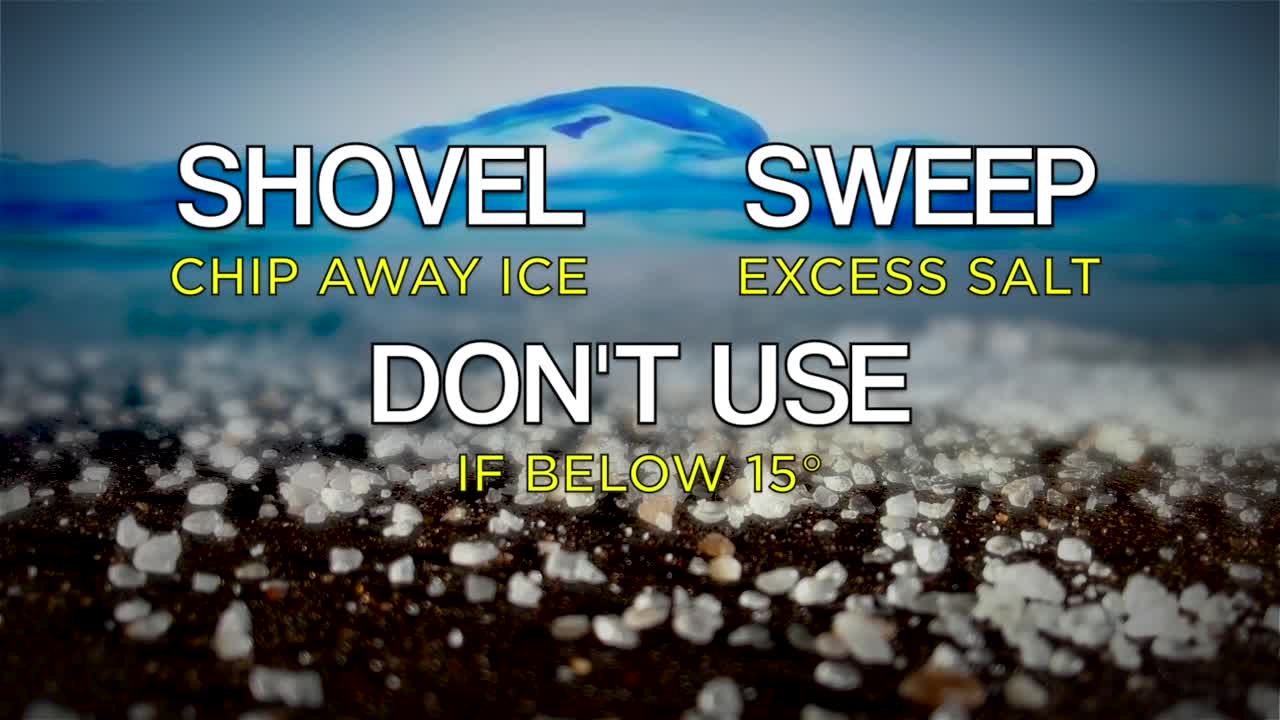MPCA: ‘Less is more’ when salting walkways, waters are getting polluted
[anvplayer video=”5152082″ station=”998122″]
Before you start generously spreading salt on your walkways, Minnesota’s pollution control wants you to remember this: less is more.
As snow falls and ice forms, it’s an annual message for the Minnesota Pollution Control Agency. But, the state agency says each year the message becomes more vital as more lakes and rivers are polluted with chloride — the main pollutant in the salt we spread to de-ice our sidewalks and driveways.
“It’s a little discouraging to continue to see the number of lakes and streams and wetlands that have too much chloride in them,” Brooke Asleson, MPCA’s chloride program coordinator, said.
“Chloride affects mostly our freshwater fish and our insects,” she added.
Asleson said those affects including impacting the food chain for fish, the ability for a fish to reproduce, and how big a fish can get … something no angler wants to hear.

(KSTP)
“Chloride is one pollutant in particular, that we’ve been paying close attention to the last few years, and we’re seeing an increase over time — every year, we’re seeing more and more lakes and streams impacted by chloride,” Asleson said.
- Shovel and scrape: the more snow and ice you remove, the less salt is needed to be effective. Watch this video about tools, techniques, and products that you can use to keep your driveways and sidewalks safe while protecting our waters.
- 15°F and below is too cold for salt: most salts stop working at this temperature. Use sand instead for traction but remember that sand does not melt ice
- Use the right amount: that crunch from sidewalk salt under your feet does not signify safety. People often think more salt equals more snow and ice melt. Around 12 ounces – roughly a coffee mug full – effectively treats a 20-foot driveway or 10 sidewalk squares (about 1,000 square feet). Aim to apply salt consistently (e.g. with a spreader), and use only in critical areas.
- Sweep up visible salt on dry surfaces: it is no longer doing any work and will be washed away into local waters. You can keep it to use later.
- Take inventory: if you have common icy spots each winter, keep track of them and fix what you can this spring to avoid creating icy conditions next winter.
- Don’t expect perfect conditions: slow down and drive carefully. Always give plow drivers plenty of space to do their work. Consider purchasing winter tires.
- Wear proper footwear: wear shoes or boots with good traction and pay attention to where you are walking, avoid icy spots, if possible. Take it slow and give yourself extra time to get where you’re going.
- Hire certified Smart Salters: businesses that need someone to shovel or plow should hire a trained and certified Smart-Salting contractor. Individuals can advocate for reducing salt use in their community, at schools, churches, local businesses, and government agencies.
To help those businesses and organizations, the MPCA hosts “Smart Salting” training — according to the MPCA, that training can help entities reduce their salt use by up to 70%.
One snow removing company that’s taken the training is Precision Landscaping & Construction, based out of Hastings.
“[At] one site [by] implementing liquids, using salt brine and direct liquid application, we were able to cut our salt use at that facility by 60%, which was some huge reductions,” Joby Nolan, owner of Precision Landscaping & Construction, said.
Inspired by the work, Nolan has even helped with some of the Smart Salting training.
“We got to get everyone on board,” Nolan said. “If only a few companies, or a few cities are pushing for this, we’re not going to see the changes we need to protect the environment.”
Find out more about the Smart Salting training here.